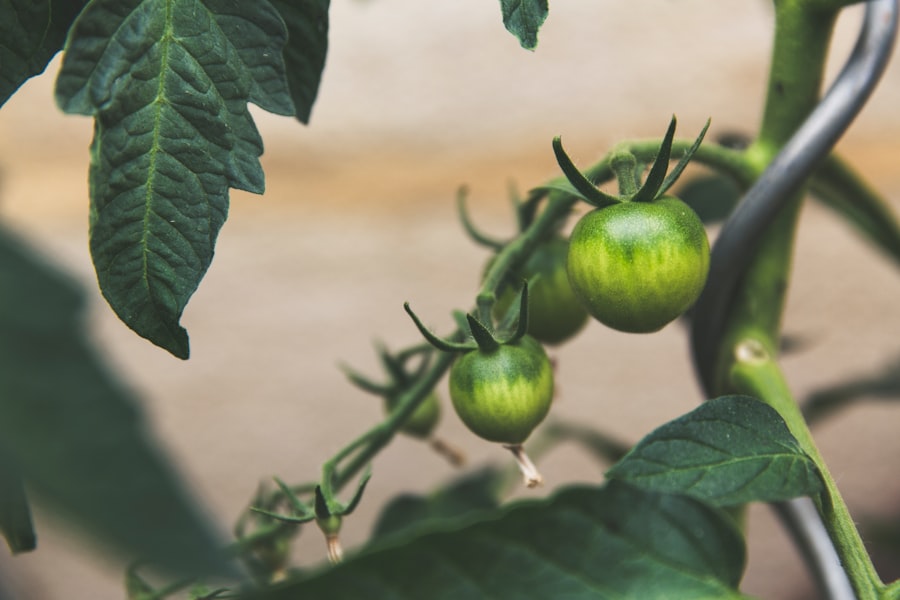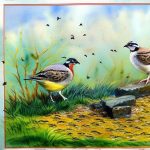Quail breeding is a rewarding and enjoyable hobby that can also be a profitable venture for those interested in raising these small game birds. Quail are known for their delicious eggs and meat, making them a popular choice for many farmers and homesteaders. Breeding quail can be a relatively simple process, but it does require some knowledge and preparation to be successful. In this article, we will explore the ins and outs of quail breeding, from selecting the right species to understanding their behavior and managing the breeding process. We will also discuss the importance of creating a suitable breeding environment and providing proper nutrition and healthcare for your quail. Whether you are a beginner or an experienced breeder, this comprehensive guide will provide you with valuable information to help you successfully breed quail.
Table of Contents
- 1 Selecting the Right Quail Species for Breeding
- 2 Setting Up a Quail Breeding Environment
- 3 Understanding Quail Breeding Behavior
- 4 Managing Quail Breeding and Egg Incubation
- 5 Health and Nutrition for Breeding Quail
- 6 Tips for Successful Quail Breeding
- 7 FAQs
- 7.1 What is quail breeding?
- 7.2 What are the different types of quail commonly bred?
- 7.3 What are the basic requirements for breeding quail?
- 7.4 How do quail reproduce?
- 7.5 What is the incubation period for quail eggs?
- 7.6 What are some common challenges in quail breeding?
- 7.7 What are some potential benefits of quail breeding?
Key Takeaways
- Quail breeding can be a rewarding and profitable venture for farmers and hobbyists alike.
- When selecting the right quail species for breeding, consider factors such as egg production, temperament, and adaptability to your local climate.
- Setting up a quail breeding environment involves providing adequate space, proper lighting, ventilation, and nesting areas for the quail.
- Understanding quail breeding behavior, such as mating rituals and egg laying patterns, is essential for successful breeding.
- Managing quail breeding and egg incubation requires careful monitoring of temperature, humidity, and turning of the eggs, as well as proper sanitation practices.
Selecting the Right Quail Species for Breeding
When it comes to quail breeding, the first step is to select the right species for your breeding program. There are several species of quail that are commonly bred, including Coturnix quail, Bobwhite quail, and California quail, among others. Each species has its own unique characteristics and requirements, so it’s important to choose the one that best suits your needs and preferences. Coturnix quail, also known as Japanese quail, are one of the most popular choices for breeding due to their fast growth rate, high egg production, and relatively docile nature. Bobwhite quail are another common choice, particularly for those interested in raising quail for hunting purposes. California quail, on the other hand, are known for their striking appearance and are often bred for ornamental purposes. When selecting a quail species for breeding, it’s important to consider factors such as your available space, climate, and intended purpose for breeding. Additionally, it’s essential to source your quail from reputable breeders to ensure the health and quality of your breeding stock.
Once you have chosen the right species of quail for your breeding program, it’s important to acquire healthy breeding stock from a reputable source. Look for breeders who prioritize the health and welfare of their birds and who can provide you with birds that are free from diseases and genetic defects. It’s also a good idea to start with a small number of birds initially, especially if you are new to quail breeding, as this will allow you to gain experience and gradually expand your breeding program as you become more confident and knowledgeable. Additionally, consider the availability of resources such as feed, housing, and veterinary care for your chosen quail species. By carefully selecting the right quail species for breeding and acquiring healthy breeding stock, you will set yourself up for success in your quail breeding endeavors.
Setting Up a Quail Breeding Environment
Creating a suitable breeding environment is crucial for the health and well-being of your quail and the success of your breeding program. Quail require a clean, spacious, and well-ventilated living space that provides them with protection from predators and the elements. When setting up a quail breeding environment, consider factors such as housing, bedding, lighting, temperature control, and sanitation. Quail housing should be designed to provide adequate space for breeding pairs or groups of birds, with separate areas for nesting, feeding, and resting. The housing should also be predator-proof and provide protection from extreme temperatures and inclement weather. Bedding material such as straw or wood shavings should be used to keep the housing clean and comfortable for the quail. Additionally, proper lighting and temperature control are essential for creating an optimal breeding environment for quail. Providing a consistent light cycle and maintaining the appropriate temperature will help stimulate breeding behavior and ensure the health and productivity of your quail.
In addition to housing and environmental factors, sanitation is also a critical aspect of setting up a quail breeding environment. Regular cleaning and disinfection of the housing area are essential for preventing the spread of diseases and maintaining the overall health of your quail. It’s important to establish a cleaning routine that includes removing soiled bedding, disinfecting the housing area, and providing fresh water and feed on a daily basis. By creating a clean and hygienic environment for your quail, you can minimize the risk of disease outbreaks and promote successful breeding outcomes. Overall, setting up a suitable breeding environment for your quail is essential for their health and well-being, as well as for the success of your breeding program.
Understanding Quail Breeding Behavior
Understanding the behavior of quail is essential for successful breeding and egg production. Quail are social birds that thrive in groups, so it’s important to provide them with appropriate socialization opportunities within their breeding environment. When it comes to breeding behavior, male quail will often display courtship behaviors such as strutting, calling, and performing mating dances to attract females. Female quail will respond to these displays by crouching down and allowing the male to mount them for mating. It’s important to observe these behaviors closely to ensure that mating is occurring regularly within your breeding group. Additionally, providing suitable nesting areas within the housing environment will encourage female quail to lay eggs and engage in brooding behaviors.
In addition to courtship and mating behaviors, it’s important to understand the egg-laying and incubation behaviors of quail. Female quail will typically lay eggs in secluded nesting areas within the housing environment, so it’s important to provide them with suitable nesting boxes or areas where they can lay their eggs in privacy. Once the eggs are laid, they can either be left in the nesting area for natural incubation by the female quail or collected for artificial incubation. Understanding these behaviors will help you manage the breeding process effectively and maximize egg production within your breeding program. By gaining insight into the behavior of quail, you can create an environment that supports their natural instincts and promotes successful breeding outcomes.
Managing Quail Breeding and Egg Incubation
Managing quail breeding and egg incubation requires careful attention to detail and regular monitoring of your breeding stock. Once mating has occurred and eggs have been laid, it’s important to keep track of egg production and fertility rates within your breeding group. Regularly collecting and inspecting eggs will allow you to assess their quality and determine whether they are suitable for incubation. It’s important to handle eggs with care to avoid damaging them or compromising their viability during the incubation process.
When it comes to egg incubation, there are two main methods: natural incubation by the female quail or artificial incubation using an incubator. If you choose to allow the female quail to incubate their eggs naturally, it’s important to provide them with a quiet and secluded nesting area where they can brood undisturbed. You should also monitor the nesting area regularly to ensure that the eggs are being cared for properly by the female quail. If you opt for artificial incubation using an incubator, it’s essential to follow the manufacturer’s instructions carefully to ensure optimal conditions for embryo development. This includes maintaining the correct temperature and humidity levels throughout the incubation period.
Regardless of the incubation method you choose, regular monitoring of the developing embryos is essential to ensure their health and viability. Candling eggs at various stages of incubation will allow you to assess embryo development and identify any potential issues or abnormalities. It’s important to remove any infertile or non-viable eggs from the incubation process to prevent them from affecting the rest of the batch. By carefully managing quail breeding and egg incubation, you can maximize hatch rates and produce healthy chicks within your breeding program.
Health and Nutrition for Breeding Quail

Maintaining the health and nutrition of your breeding quail is essential for successful breeding outcomes and overall productivity. Providing a balanced diet that meets the nutritional needs of your quail is crucial for supporting their reproductive health and egg production. A high-quality commercial feed formulated specifically for quail should serve as the foundation of their diet, supplemented with fresh greens, fruits, vegetables, and protein sources such as mealworms or crickets. It’s important to provide access to clean water at all times to prevent dehydration and support overall health.
In addition to nutrition, regular health monitoring and preventative care are essential for maintaining the well-being of your breeding stock. This includes regular observation of your quail for signs of illness or injury, as well as routine veterinary check-ups when necessary. It’s important to be proactive in addressing any health issues that arise within your breeding group to prevent them from impacting reproductive performance or overall productivity.
Preventing disease outbreaks within your breeding environment is also crucial for maintaining the health of your quail. This includes implementing biosecurity measures such as quarantine protocols for new birds entering your flock, as well as regular cleaning and disinfection of the housing area to minimize the risk of disease transmission. By prioritizing the health and nutrition of your breeding quail, you can support successful breeding outcomes and ensure the long-term sustainability of your breeding program.
Tips for Successful Quail Breeding
Successfully breeding quail requires attention to detail, dedication, and a thorough understanding of their specific needs and behaviors. Here are some additional tips to help you achieve success in your quail breeding endeavors:
1. Provide adequate space: Quail require sufficient space within their housing environment to prevent overcrowding and reduce stress levels. Providing ample space will also allow them to engage in natural behaviors such as dust bathing and foraging.
2. Monitor behavior closely: Regularly observing the behavior of your quail will allow you to identify any issues or abnormalities that may impact their reproductive performance or overall well-being.
3. Minimize stress: Minimizing stress within your breeding group is essential for promoting successful mating behavior and egg production. This includes providing a calm and quiet environment free from disturbances.
4. Keep detailed records: Keeping detailed records of egg production, fertility rates, hatch rates, and any health issues will allow you to track the progress of your breeding program and identify areas for improvement.
5. Seek advice from experienced breeders: Connecting with experienced quail breeders can provide valuable insights and guidance that can help you overcome challenges and achieve success in your breeding endeavors.
By implementing these tips and strategies, you can enhance your knowledge and skills as a quail breeder and increase the likelihood of achieving successful breeding outcomes within your program.
In conclusion, quail breeding is a rewarding endeavor that offers numerous benefits for hobbyists, farmers, and homesteaders alike. By selecting the right species for breeding, creating a suitable breeding environment, understanding quail behavior, managing breeding and egg incubation processes effectively, prioritizing health and nutrition, and implementing valuable tips for success, you can establish a thriving quail breeding program that yields healthy chicks and sustainable productivity over time. With dedication, patience, and ongoing learning, you can enjoy the many rewards that come with successfully breeding these fascinating game birds.
In conclusion, quail breeding is a rewarding endeavor that offers numerous benefits for hobbyists, farmers, and homesteaders alike. By selecting the right species for breeding, creating a suitable breeding environment, understanding quail behavior, managing breeding and egg incubation processes effectively, prioritizing health and nutrition, and implementing valuable tips for success, you can establish a thriving quail breeding program that yields healthy chicks and sustainable productivity over time. With dedication, patience, and ongoing learning, you can enjoy the many rewards that come with successfully breeding these fascinating game birds. Whether you are interested in raising quail for meat, eggs, or simply for the joy of observing and caring for these unique birds, the knowledge and skills gained from quail breeding can be a valuable asset for anyone looking to enhance their self-sufficiency and agricultural practices.
If you’re interested in quail breeding, you may also want to check out Poultry Wizard’s article on “Do Turkeys Need a Coop?” Understanding the housing needs of different poultry species can provide valuable insights into creating the ideal environment for your quail. You can find more information on turkey coops and other poultry-related topics at Poultry Wizard.
FAQs
What is quail breeding?
Quail breeding refers to the process of raising and breeding quail for various purposes such as meat, eggs, or as pets. It involves creating suitable conditions for quail to mate, lay eggs, and raise their young.
What are the different types of quail commonly bred?
Some of the most commonly bred quail species include the Japanese quail (Coturnix japonica), the Bobwhite quail (Colinus virginianus), and the California quail (Callipepla californica).
What are the basic requirements for breeding quail?
Basic requirements for breeding quail include suitable housing with proper ventilation, temperature control, and protection from predators. Additionally, quail require a balanced diet, access to clean water, and nesting areas for laying eggs.
How do quail reproduce?
Quail reproduce through sexual reproduction, with the male quail courting the female through various displays and calls. Once the female is receptive, mating occurs, and the female will lay eggs within a few days.
What is the incubation period for quail eggs?
The incubation period for quail eggs is typically around 17-18 days, depending on the specific species of quail.
What are some common challenges in quail breeding?
Common challenges in quail breeding include maintaining optimal environmental conditions, preventing diseases, and ensuring proper nutrition for the quail. Additionally, managing aggression and ensuring proper mating behavior can also be challenging.
What are some potential benefits of quail breeding?
Quail breeding can provide a sustainable source of meat and eggs, as well as potential economic opportunities. Additionally, quail breeding can also contribute to conservation efforts for certain quail species.
Meet Walter, the feathered-friend fanatic of Florida! Nestled in the sunshine state, Walter struts through life with his feathered companions, clucking his way to happiness. With a coop that’s fancier than a five-star hotel, he’s the Don Juan of the chicken world. When he’s not teaching his hens to do the cha-cha, you’ll find him in a heated debate with his prized rooster, Sir Clucks-a-Lot. Walter’s poultry passion is no yolk; he’s the sunny-side-up guy you never knew you needed in your flock of friends!







